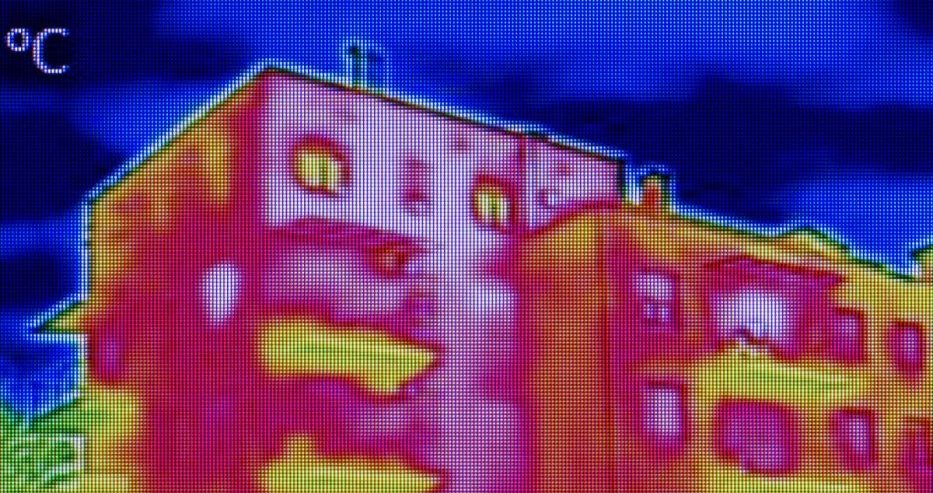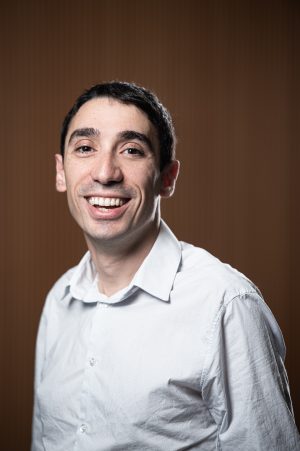
Elizabeth Howell, July 15, 2019
Building a sustainable community
Buildings of the future will need to be designed and operated to have a much smaller environmental footprint.

That’s why the professors of Carleton’s Building Performance Research Centre are eking out every efficiency they can from building designs. Their goal is to develop tools, technologies, and methods to reduce energy use and greenhouse gas emissions from buildings and communities, while making them more comfortable and useable.

Their cutting-edge research has extensive public and private financial support to bring the best of building design to Canadians. Here’s an overview of some of their work.
Remembering building occupants

Liam O’Brien (associate professor) says it’s time to update our building designs to include human factors. “A lot of the time comfort has implications for energy use,” he said. For example, a person working in a cold office might plug in a space heater.
He recently wrapped up a two-year study, supported by Natural Resources Canada, for $350,000 – with more work ongoing. His group hosted a stakeholder workshop to teach designers, engineers, architects and more how to integrate occupants into building design. A case study in Toronto revealed how differently each occupation approaches the problem, which argues for a more multidisciplinary approach to design, O’Brien said.
Another newer project, in association with Brookfield Global Integrated Solutions, aims to better manage their vast government building portfolio to reduce greenhouse gas emissions. With support from the Natural Sciences and Engineering Research Council (NSERC) and Ontario Centres of Excellence (OCE), Carleton will data mine old building operator logbooks against recorded temperatures in a space, to see how occupant complaints correspond with measurements. This is just one example of using data in unique ways to reveal new insights about which retrofit strategies would achieve the government’s performance goals.
Water heating, or sand heating?

Ian Beausoleil-Morrison (professor) is busy at the Urbandale Centre for Home Energy Research. His group captures solar energy in the summertime to use during Ottawa’s cold winter, when there is less sunlight available. They are trying two concepts to seasonally store plentiful renewable resources from the summer. Solar panels on the roof heat either a tank of water, or a box of sand – both buried nearby the building.
“We want to provide 90% of the space-heating and hot water needs (the majority of the energy needs in houses) for a typical year,” Beausoleil-Morrison said. The first year of operations, using a water tank about the size of a small bedroom, provided many useful research results. This year they’re trying the sand.
The sandbox is filled with heat exchange pipes. Before it was buried, Beausoleil-Morrison’s team soaked the sand with water and sealed it with both insulation and a waterproof membrane.
“Our objective is about reducing the energy burden of housing,” he said. Several entities are providing support. Besides Urbandale Construction, funding comes from the Canada Foundation for Innovation, the Ontario Research Fund, and several companies that provided discounted or free products.
Collaborating with communities

Indigenous communities are respectful of their land and the role it plays in community life. Working with MoCreebec Eeyoud First Nation, Carleton is thus investigating a potential new community site to heavily use renewables, reducing energy consumption at Moose Factory, Ont.
A team led by Jean Duquette (assistant professor) seeks energy efficiency improvements in the community buildings already on site, and sustainable energy options – whether wind, solar thermal or district heating – that would be helpful to the community. “District heating” is ideal for remote communities in Canada, and benefits increase when measures such as high-efficiency windows and improved insulation are used. “The main challenge is to develop a way to optimally size the heating grid,” he said.
That’s not the only renewable project Duquette is involved with. The Future Energy Shift Research Program will generate power from wastewater using a hydro turbine prototype, at a condominium in Vancouver. Once the site is selected, researchers will see how feasible this concept is – and how accepting condo residents are of the idea. This interdisciplinary program will bridge the fields of public policy, architecture and mechanical engineering, Duquette said.
Building better envelopes

Cynthia Cruickshank (associate professor) conducts research on high performance insulation and efficient building energy systems such as solar-assisted heat pumps and advanced thermal storage systems.
Buildings account for over one-quarter of Canada’s energy use and just over one-fifth of all greenhouse gas emissions, and heat loss through the building envelope is the most significant factor. Working with a team of students, Cruickshank studies how heat, air and moisture transfer through advanced building materials. New insulation technologies could reduce heat loss and greenhouse gas emissions, she points out, but only if they’re applied properly. Otherwise, there’s a risk of moisture accumulation, mould growth or even rot.
Cruickshank prioritizes efficiency, affordability, and resilience, and trains students on the performance and risks of innovative construction materials. Her research brings together federal, academic and industry resources to offer hands-on education opportunities at the collegiate, undergraduate and post-graduate levels. “With the current shortages of design professionals and tradespeople, and changes to building practices driven by increased code requirements, the training of new graduates on building science and envelope design principles will be critical to provide the necessary numbers of trained building professionals that Canada’s building industry is missing,” she said.
Finding a surplus

At the Rideau River rapids, beside Richcraft Hall, is a “tiny house” built by students (called the Northern Nomad) custom-built for efficiency. Led by Scott Bucking (associate professor), the group plans to make a building generate more energy than it needs, and donate the excess to the grid.
Early results show much promise. After a year of operations, the building stored its solar energy surplus in a battery. But there’s a lot more that could be done. Now the research team will try taking water out of the air and storing it in a 900-litre water tank (well-insulated against the cold, to be sure.) “We’ve even met all of the major building codes,” Bucking said.
On a larger scale, projects like this means Ontario won’t need to use as many non-renewable resources – like natural gas– to generate electricity needs during the summer. Bucking even has plans for a second tiny house, literally building on the lessons learned from the first.
There are more than 50 sponsors involved in the project. Major ones include NSERC, Brookfield Renewable, the Borealis Foundation, Carleton’s Future Funder crowdsourcing platform and donated materials from local companies.
Developing diagnostic tools

Just like people, buildings can have “symptoms” of poor health that qualified professionals can track. Burak Gunay (assistant professor) gives the example of an air handling unit that sends outdoor air indoors. Sometimes, programming mistakes will “dump in large amounts of outdoor air”, which in Canada’s extreme warmth or cold can cost a lot of money. He has begun working on a research project to create a better building energy management tool, with support from a British Columbia-based company CopperTree Analytics, and NSERC.
Gunay has several projects to improve the energy efficiency of existing buildings through data analytics-driven operation strategies. For example, he is working with O’Brien and Bucking and several researchers from NRC on a project to develop new strategies to benchmark the energy performance of federal government buildings in Ottawa, over 100 buildings stretching from Tunney’s Pasture to downtown. “We’re ensuring that building and plant operators have access to actionable key performance indicators that will guide them through their decisions,” he said.
“Building services in modern buildings are often controlled through a large network of sensors and actuators; efficient delivery of these services requires these interconnected devices to function in harmony with each other and not fight with each other,” he concludes. “We’re trying to optimize the operation of these subsystems in large commercial and institutional buildings.”
Share: Twitter, Facebook